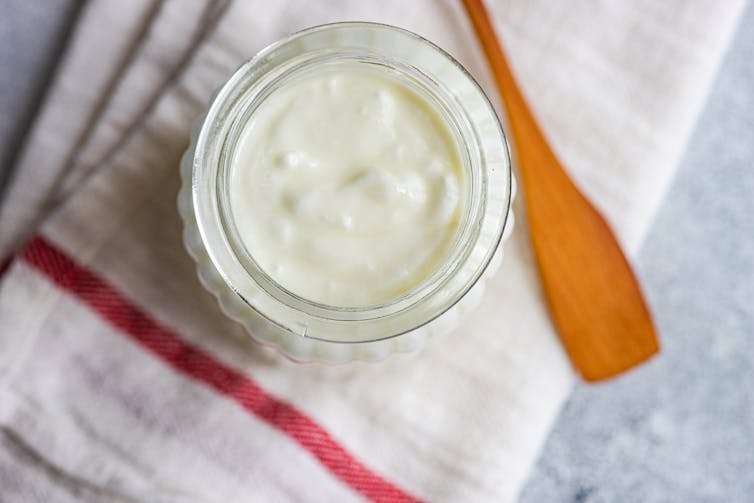When milliseconds can mean the difference between silver and gold, endurance athletes in sports like marathon running, cycling, rowing and swimming optimize every aspect of their physiology for a competitive advantage.
Many of these efforts result in improved performance of mitochondria, the tiny but mighty powerhouses within your cells. Carefully calibrated doses of exercise combined with beneficial stress—altitude, cold, and heat—and optimized recovery in the form of nutrition, meditation, and sleep, have a positive effect on the number and health of mitochondria in the cells of your muscles, heart, and brain.
But there’s another aspect of endurance training that has perhaps been largely overlooked by athletes and coaches: the role of the gut microbiome in optimizing the health and fitness of your mitochondria.
I am a physician-scientist and gastroenterologist who has been studying the impact of diet on the role of the gut microbiome in health and disease for over 20 years. While research evaluating the effects of diet on the microbiome and mitochondria improves our understanding of diseases such as obesity, cancer, rheumatoid arthritis, and Alzheimer’s disease, it could also help athletes reach new levels of performance through innovative approaches to nutrition.
Microbiomes and mitochondria
The gut microbiome, a hidden factory of highly collaborative microorganisms in your gut, keeps your metabolism, immune system, and brain running smoothly. Some researchers liken it to another organ that senses nutritional input, makes signaling molecules, and primes your body to respond appropriately.
Research has shown that endurance athletes have different gut microbiotas than the general population. The composition and function of their microbiome, such as increased production of a short-chain fatty acid called butyrate, is associated with increased VO22 max, a fitness benchmark that measures your ability to consume oxygen during intense exercise. One organism in particular, Veillonelle is found in some elite runners and may help increase lactate threshold, a measure of fitness closely related to mitochondrial function and how long an athlete is able to sustain intense effort.
A healthy microbiome communicates with mitochondria, the tiny structures inside your cells that convert calories into raw cellular energy needed for muscle contraction and other essential functions. It does this by converting undigested food components of a healthy diet—like fiber, polyunsaturated fats, and polyphenols—into molecules that increase the number and health of your mitochondria.
Some of these metabolites—butyrate, conjugated linoleic acid, and urolithin A—specifically improve muscle strength and endurance. Combining exercise with a diet rich in fiber, polyphenols—a chemical compound found in plants—and healthy fats can increase mitochondrial capacity and improve exercise performance.
Nutritional errors and gaps
A healthy diet is essential for microbiome and mitochondrial health. Conversely, ultra-processed diets have been linked to diseases ranging from obesity and cancer to autoimmune diseases and Alzheimer’s disease. Some people believe that athletes are protected from the negative health effects of ultra-processed diets because of the beneficial effects of exercise. While this may be partially true, it’s important to consider other factors in diet beyond just calories burned.
Additives used to improve the taste and appearance of foods, such as emulsifiers, can negatively impact the gut microbiome, compromising the intestinal barrier and causing systemic inflammation, an unhealthy state linked to metabolic diseases, cancer, autoimmune diseases, and neurodegenerative diseases. Ultra-processed foods have also removed key factors like fiber, polyphenols, and healthy fats found in whole foods that support gut health and signal to the mitochondria that there are calories to metabolize.

ArtistGNDphotography/E+ via Getty Images
Endurance sports drinks, shakes, bars, and gels are processed foods formulated to provide concentrated, accessible energy during intense exercise. While they are harmful in other contexts, they can be essential for improving performance during long-term endurance events when your body depletes its own version of accessible carbohydrates called glycogen.
But it’s important to complement these energy supplements with a healthy diet in the recovery hours following exercise. The combination of an unhealthy base diet and high-intensity exercise could compromise your gut barrier and increase inflammation. This has been linked to a variety of workout-related issues, including gastrointestinal upset, musculoskeletal injuries, and respiratory illnesses.
Performance-enhancing microbes
Reintroducing a diet rich in foods that positively affect your microbiome (beans, nuts, seeds, whole grains, fruits and vegetables) during the recovery phase of training can help most people prevent the adverse effects of high-intensity exercise and optimize their performance.
However, due to improper use of antibiotics and processed diets, some people lack the essential microbes and metabolic mechanisms to convert fiber and polyphenols into molecules that are useful to the body. This deficiency may explain why some healthy foods and diets may not be beneficial or tolerated by everyone.

Annabogush/RooM via Getty Images
A healthy diet could then benefit from reintroducing key microbes into the gastrointestinal tract. Research has shown that specific strains of probiotic bacteria can improve barrier function, reduce systemic inflammation, and potentially improve athletic performance by mitigating the side effects of high-intensity exercise. An alternative approach is to increase the consumption of fermented foods, such as yogurt and pickled vegetables, which can increase microbiome diversity and reduce systemic inflammation.
In some cases, healthy foods can also be supplemented by directly providing the body with key metabolites produced by microbes. Research shows that these metabolites, also called postbiotics or exercise mimics, improve muscle strength and exercise performance. Some postbiotics also function as prebiotics, promoting the growth of healthy microbes and helping to restore a damaged microbiome.
From research to podium
While the benefits of nutrition that targets your microbiome and mitochondria for overall health are becoming increasingly clear, this approach is still in the early stages of exploration in endurance sports.
For casual and weekend athletes, comprehensive nutritional strategies that support the microbiome and mitochondria can be very helpful. These strategies have the potential to improve performance, protect against adverse effects of training, and prevent chronic diseases such as obesity, cancer, and Alzheimer’s disease.
For elite athletes looking to make even small improvements to an already well-oiled training regimen, further research into how the gut microbiome influences performance could prove invaluable. In a highly competitive field where nothing can be left out—or put away—such interventions could be the deciding factor in whether or not they finish on the podium.